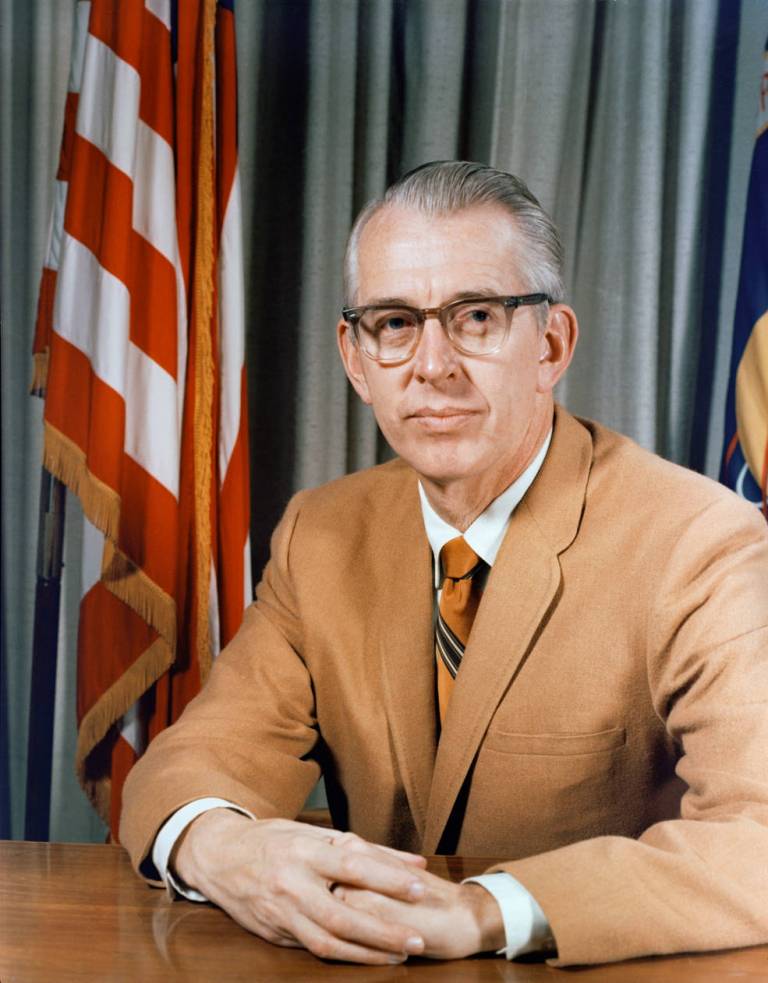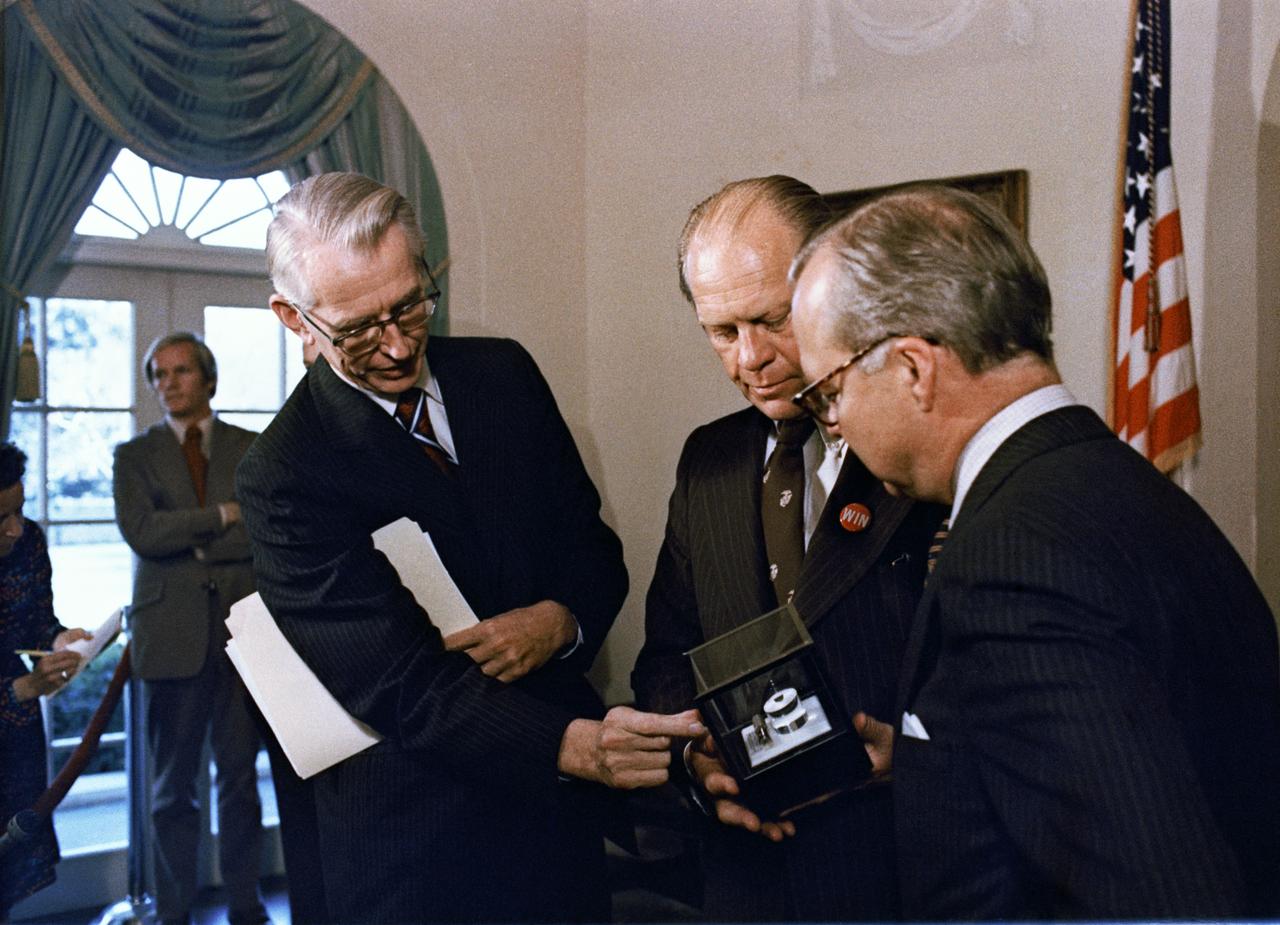
James C. Fletcher
NASA Administrator (Apr. 27, 1971–May 1, 1977 and May 12, 1986–Apr. 8, 1989)
Dr. James Chipman Fletcher, was the administrator of the National Aeronautics and Space Administration who gained the approval of the Nixon Administration on January 5, 1972, to develop the Space Shuttle as the follow-on human space flight effort of the agency. He also served as NASA administrator a second time, for nearly three years following the loss of the Space Shuttle Challenger on January 28, 1986.
During his first administration at NASA, Dr. Fletcher was responsible beginning the Shuttle effort, as well as the Viking program that sent landers to Mars. During his second tenure, he presided over the effort to recover from the Challenger accident. Indeed, he oversaw or initiated virtually every major space project of the last two decades. Although the missions were planned before he took over, he was Administrator during the three Skylab missions in 1973 and 1974 and the two Viking probes that landed on Mars in 1976. He also approved the Voyager space probe to the outer planets, the Hubble Space Telescope program, and the Apollo-Soyuz mission, which in 1975 linked American astronauts and Soviet cosmonauts in space.
During his second administration at NASA, Fletcher was largely involved in efforts to recover from the Challenger accident. With the accident, the Shuttle program went into a two-year hiatus while NASA worked to redesign the solid rocket boosters and revamp its management structure. Fletcher ensured that NASA reinvested heavily in the program’s safety and reliability, made organizational changes to improve efficiency, and restructured its management system. Most important, he oversaw a complete reworking of the components of the Shuttle to enhance its safety and added an egress method for the astronauts. A critical decision resulting from the accident and its aftermath—during which the nation experienced a reduction in capability to launch satellites—was to expand greatly the use of expendable launch vehicles. He was in charge of the agency when the Space Shuttle finally returned to flight on September 29, 1988.
Dr. Fletcher was born on June 5, 1919, in Millburn, New Jersey. He received an undergraduate degree in physics from Columbia University and a doctorate in physics from the California Institute of Technology. After holding research and teaching positions at Harvard and Princeton Universities, he joined Hughes Aircraft in 1948 and later worked at the Guided Missile Division of the Ramo-Wooldridge Corporation.
In 1958 Fletcher co-founded the Space Electronics Corporation in Glendale, California, which after a merger became the Space General Corporation. He was later named systems vice president of the Aerojet General Corporation in Sacramento, California. In 1964 he became president of the University of Utah, a position he held until he was named NASA Administrator in 1971.
When he left NASA in 1977, Dr. Fletcher became an independent consultant in McLean, Virginia, and served on the faculty of the University of Pittsburgh. During the nine years between his terms as NASA Administrator, Fletcher was extremely active as an advisor to key national leaders involved in planning space policy. Among other activities, he served on advisory board involved in developing the Strategic Defense Initiative.
Dr. Fletcher died of lung cancer, at his home in suburban Washington on December 22, 1991.
A discussion of the career of Dr. Fletcher is contained in Roger D. Launius, “A Western Mormon in Washington, D.C.: James C. Fletcher, NASA, and the Final Frontier,” Pacific Historical Review 64 (May 1995): 217–41.



























